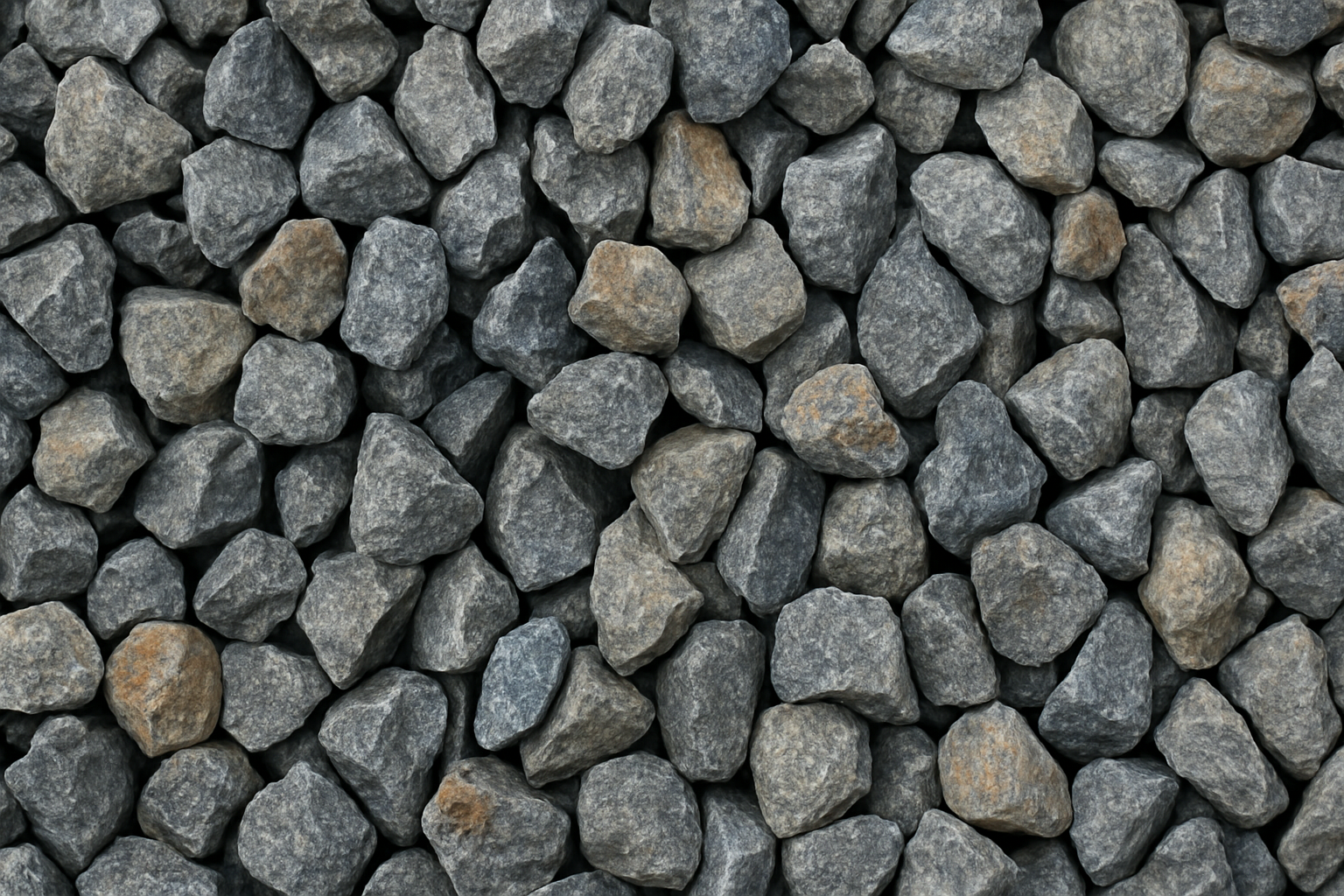Ballast is a granular and porous material, typically composed of crushed stone, used to support railway rails and sleepers, distribute loads to the ground, and ensure the continuity of track geometry.
Function of Ballast in the Railway System
In railway infrastructure, ballast fulfills the following essential functions:
- Load Distribution: Transfers loads received via rails and sleepers to a wider area and to the substructure
- Vibration Damping: Absorbs dynamic forces during train passages, ensuring ride comfort
- Drainage: Facilitates the removal of rainwater and groundwater from the track
- Preservation of Track Geometry: Keeps track gauge and alignment stable
Technical Properties of Ballast
A high-quality railway ballast should possess the following characteristics:
- Grain Size: Should be between 22 mm and 63 mm (in compliance with TS EN 13450)
- Compressibility: Should have a low compression rate and maintain its form under dynamic loads
- Hardness: Must resist high pressure and not crumble easily
- Water Absorption Rate: Should be low to avoid hindering drainage
- Edge Angle: Angular, irregular grains enhance interlocking through high friction
- Contamination Ratio: Fine materials should be less than 1%
- Ease of Maintenance: The ballast layer is renewable and rearrangeable
Material Type Used
Railway ballast is generally produced from hard rocks known as crushed stone. Preferred rock types include:
- Basalt: The most commonly used ballast type in Türkiye; features high strength and low water absorption
- Granite: Chosen for its hardness and abrasion resistance
- Andesite: Cost-effective and possesses sufficient physical properties
- Diabase and Quartzite: Usable if locally available
- Limestone: Not considered suitable by TCDD due to its soft structure and low abrasion resistance
Layer Structure and Thickness
The ballast layer in the track superstructure is divided into two:
- Sub-ballast (sub-base layer): Laid to form a smooth surface for ballast placement; thickness is typically 10–15 cm
- Top Ballast: Fully surrounds the sleepers; in main lines, its thickness is 25–35 cm. In high-speed train lines, this is increased

Ballast (Generated with Artificial Intelligence)
Use and Standards in Türkiye
TCDD uses the TS EN 13450 standard and its internal technical specifications for ballast procurement and installation. Production is generally carried out by TCDD Stone Crushing Facilities, and the suitability of quarries is evaluated based on technical reports.
The 2023 TCDD Network Statement provides detailed explanations regarding ballast procurement and maintenance activities. Particularly in track renewal works, the reuse of old ballast through screening has gained importance for sustainability.
Advantages
- Long Lifespan: High-quality ballast can be used for decades with proper maintenance
- Modularity: Damaged sections can be easily removed and re-laid
- Cost-effectiveness: Offers a cost advantage when supplied from domestic quarries
- Ease of Application: Can be laid and compacted manually or by machine
Disadvantages
- Dust Accumulation: Fine materials can accumulate over time, reducing drainage
- Displacement Risk: Ballast may shift under heavy train loads
- Frequent Maintenance Requirement: Requires regular levelling, screening, and reinforcement over extended use
Ballast is one of the oldest and most fundamental components of the railway superstructure. With its essential functions in load transfer, track stability, and drainage, it directly affects the performance of railway lines. In Türkiye, high-standard production is carried out using primarily basalt-based crushed stones, and track safety and comfort are ensured through practices compliant with TCDD’s technical specifications.

